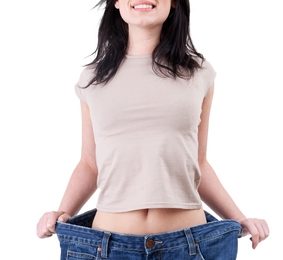It’s been a requirement of European Law since 2011 that all packaged food must be labelled with information on ingredients, nutritional value and “energy content” (that’s calories to you and me). Surprisingly, though, alcoholic drinks which contain more than 12% by volume are exempt from this regulation. Now MEPs have voted in favour of seeking to legislate that label printing on all alcoholic beverages should include information on calorific values.
Some may be surprised that drinks manufacturers themselves are not necessarily completely against the idea. As a spokesman for the Portman Group which represents drinks manufacturers said “A number of drinks companies and retailers are already taking voluntary action when it comes to calorie labels.” Drinks giant, Diageo, is already proposing to work with the EU to develop standard labelling, including information on calorie content, on alcoholic drinks
In fact, a number of small producers of alcoholic drinks, such as craft beer micro-breweries have invested in in-house digital label printing equipment from specialists such as www.quicklabel.co.uk. This allows precisely this sort of amendment to be made to product labelling without any interruption to the production process or wastage of existing labelling stocks.
How Many Calories does your Drink Contain?
 In an article published in the British Medical Journal (BMJ), (which can be found here: http://www.bmj.com/content/350/bmj.h2047 ), Fiona Sim, Chairwoman of the Royal Society for Public Health says that among adults who drink, around 10% of their daily calorie intake is due to alcohol consumption. Yet there’s a surprising degree of confusion as to exactly how many calories different drinks contain. As Glenis Willmot, MEP for the East Midland said, “Europe is still the heaviest-drinking region in the world but many people don’t realise that a large glass of wine contains the same number of calories as a slice of cake”. It’s this insidious “calorie creep” which worries many health professionals. As Fiona Sim’s article in the BMJ points out, 250ml wine glasses have become far from unusual in many bars and restaurants, but how many women would, for example, be aware that with two of those, you’ve blown 20% of your recommended daily calorie intake?
In an article published in the British Medical Journal (BMJ), (which can be found here: http://www.bmj.com/content/350/bmj.h2047 ), Fiona Sim, Chairwoman of the Royal Society for Public Health says that among adults who drink, around 10% of their daily calorie intake is due to alcohol consumption. Yet there’s a surprising degree of confusion as to exactly how many calories different drinks contain. As Glenis Willmot, MEP for the East Midland said, “Europe is still the heaviest-drinking region in the world but many people don’t realise that a large glass of wine contains the same number of calories as a slice of cake”. It’s this insidious “calorie creep” which worries many health professionals. As Fiona Sim’s article in the BMJ points out, 250ml wine glasses have become far from unusual in many bars and restaurants, but how many women would, for example, be aware that with two of those, you’ve blown 20% of your recommended daily calorie intake?
Calorie Comparisons
Let’s take a look at some more of the comparisons between our favourite alcoholic drinks and calories contained in foods and snacks.
It may come as a surprise to many people, but there are roughly as many calories (around 200) in a 250ml glass of average strength red wine as there are in a jam doughnut. A pint of beer isn’t much better for the diet, with around 180 calories – roughly the same number as you’d find in a bag of crisps. Even a single Gin and a small bottle of slim-line tonic water is as fattening as a slice of white bread. One really depressing fact, for anyone who, like me, occasionally enjoys a few pints of an evening is that the calories contained in four pints of beer is around the equivalent of two and a half burgers, and would need a seventy minute run to burn off.
It’s worth bearing in mind that health professionals aren’t trying to be killjoys. A social drink is one of life’s real pleasures for many people. As with any product labelling, the real intent is to give customers the information we all need to make an informed choices. The rest is up us.
About the author
Clare Lavender is a nutritional healthcare specialist and writer living and working in the north of England. A keen runner, she has completed several half marathons and is now preparing for her first full marathon outing in the autumn of 2015.



